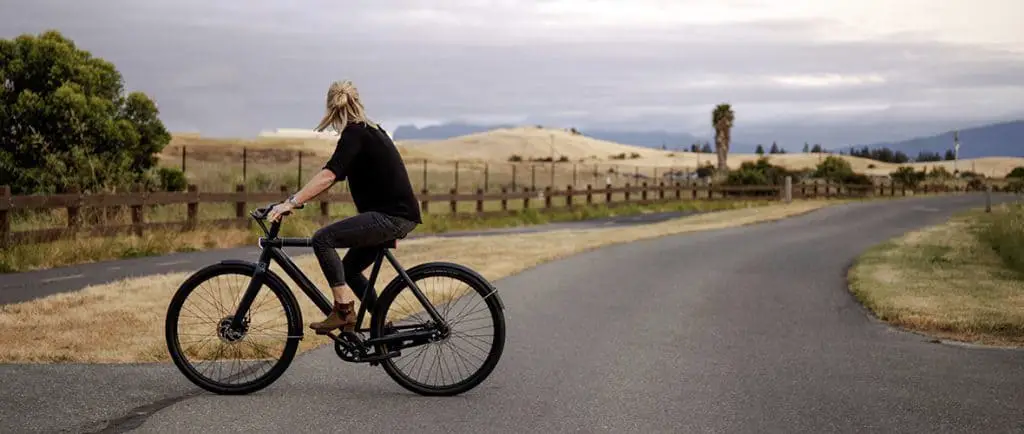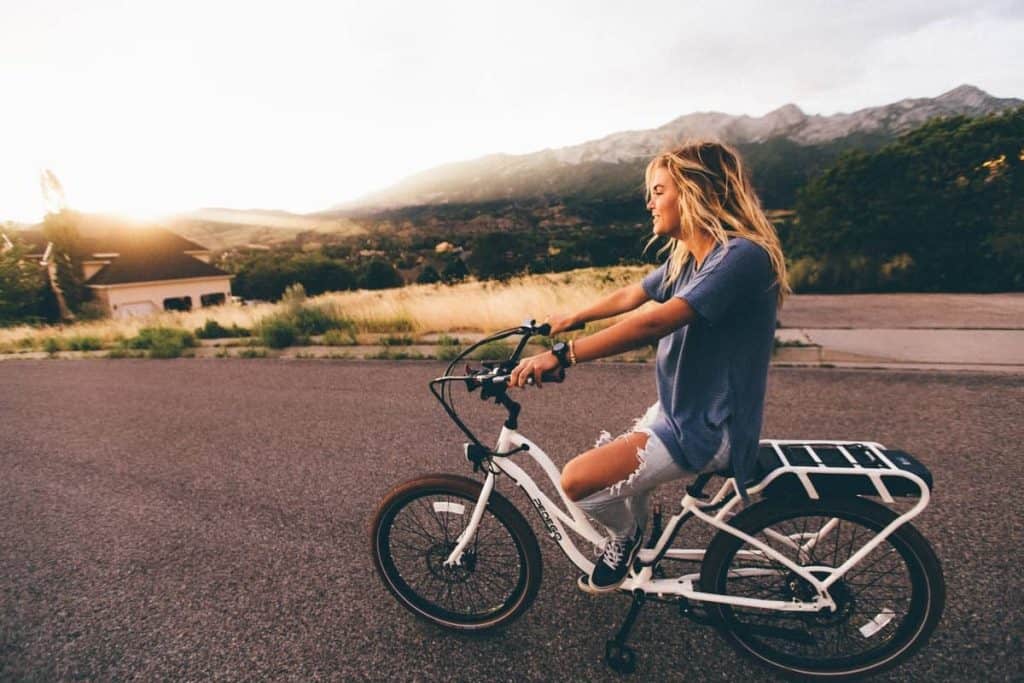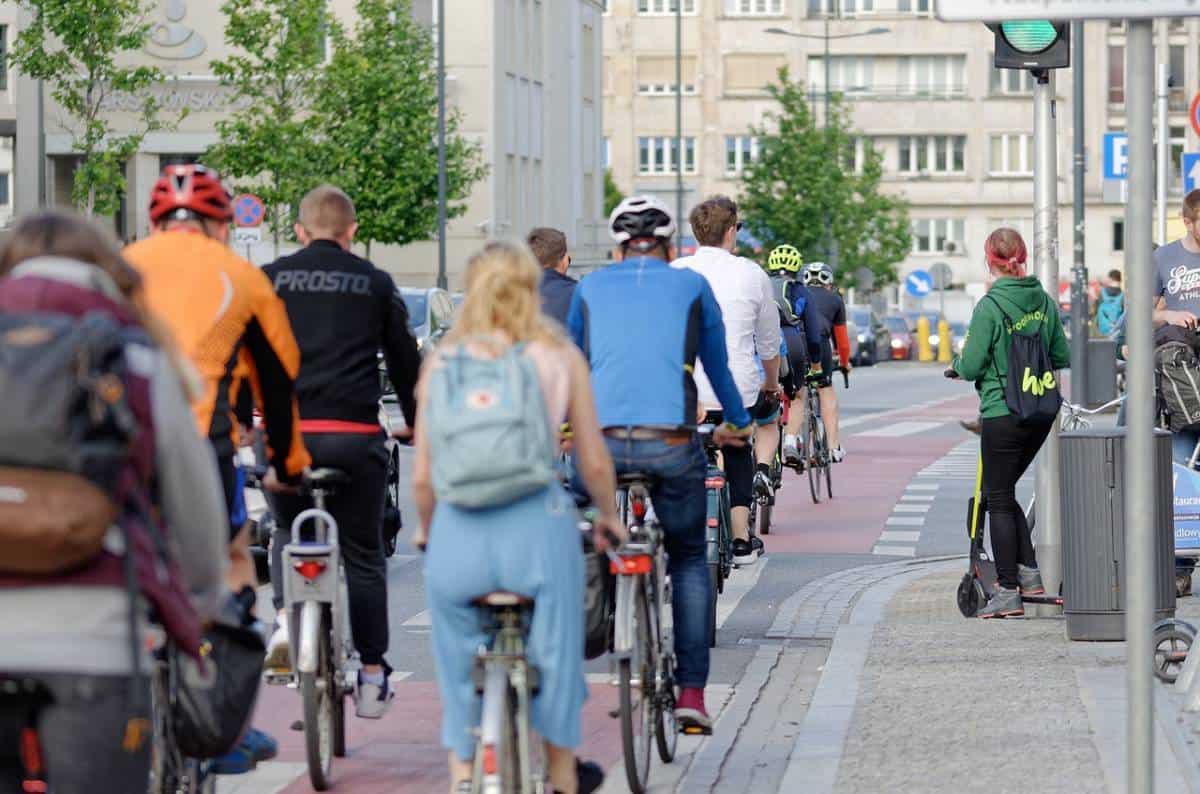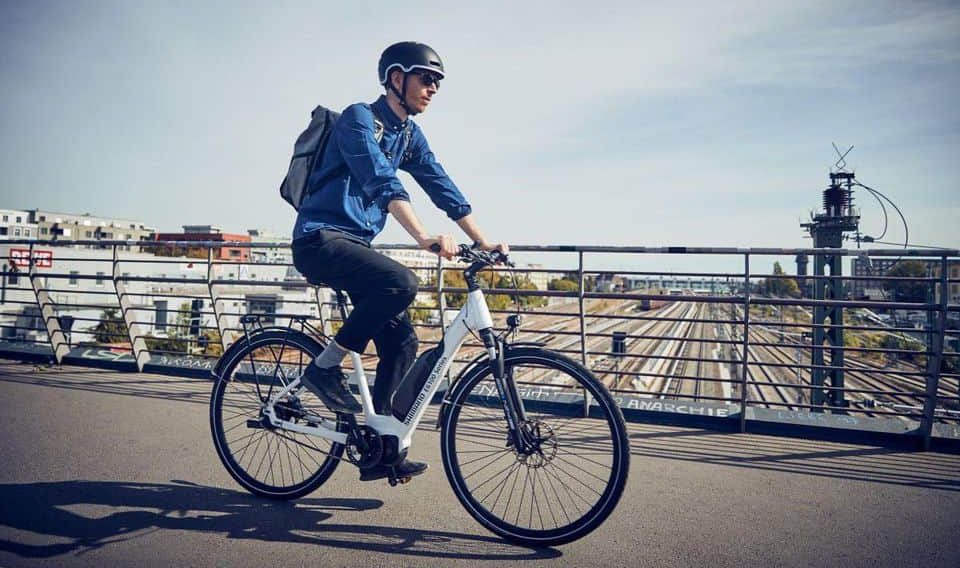Last Updated on July 19, 2023 by Igor Karni

Are electric bikes legal in Australia?
Yes, electric bikes are legal in Australia! Bear in mind, however, that the rules and regulations surrounding e-Bikes and what is legally classified as an e-Bike vary slightly between states and territories.
Unless otherwise stated in a state or territory’s laws, e-Bikes are classified by the Australian Vehicle Standards as a “bicycle that has an auxiliary motor with a maximum power output not exceeding 250 W without consideration for speed limits or pedal sensors” (source).
However, the motor wattage limit also depends on the type of e-Bike the vehicle is, such as if the e-Bike has a throttle included. You will be able to read more about these e-Bike distinctions later in the article.
Here are a few of the universal e-Bike rules across Australia:
- It is compulsory to wear a helmet; not wearing one can result in a fine
- E-Bikes must have a rear and front light
- Riders can be fined if caught riding on a footpath
- E-Bikes cannot exceed the maximum speed of 25 km/h (or, 15 mph)
Difference in rules/regulations between pedal assist and throttle e-bike in Australia
In Australia, e-Bikes are not determined by the Class system that the United States uses. Where the U.S. classifies Pedal Assist/Pedelec e-bikes as Class 1 and Throttle e-Bikes as Class 2, Australia allows for both types of e-bikes under its own set of rules.
First, let’s look at the distinction between pedal-assist and throttle. The electric drive system on a pedal-assist e-bike can only be activated through pedaling, and typically have a legal maximum speed of 25 km/h in areas like Europe and Australia (Australia has largely modeled their e-Bike rules around Europe’s system).

Throttle on-demand e-bikes can be activated through a throttle element such as grip-twist, button, or trigger. Some e-bikes with throttle still require pedaling in order to propel themselves, but some e-Bikes do not require this and can propel themselves based on throttle alone.
However, Australian standards across the board make it clear that an e-bike with a throttle must rely on pedaling power as its main power source.
Riders should consider that the maximum speed is higher in the U.S. and Canada, averaging out at 32 km/h, and motor wattage can range up to 750W is allowed in certain areas – thus, e-bikes in these areas are designed to meet these limits.
With that in mind, Australian riders should be careful if purchasing their e-bikes from outside Australia, in order to ensure the motor wattage and speed limit meet Australian standards.
In Australia, pedal-assist (or “pedelec”) e-bikes are limited to a motor wattage of 250W, and a speed of 25 km/h and have to be EN15194-certified, which is short for the European Standard for Power Assisted Pedal Cycles. Australian riders should ensure they read over the EN15194 document before purchasing their pedelec e-bike.
Read also: Best known e-bike brands in Australia. And, Best specialized electric bike insurance companies in Australia.
With throttle e-bikes, the motor must cut out at 25 km/h and must have a motor wattage of 200W. In Australia, legal throttle e-bikes also include those that do not require pedaling for an initial take-off.
Any e-bike that exceeds these respective regulations will be legally classified as a motor vehicle, wherein a separate system of road rules and laws apply.
Difference in rules/regulations between a traditional e-bike and speed e-bike in Australia
From 2012 onwards, Australia updated its laws to reflect European e-Bike standards, stating that the maximum speed of an e-Bike is 25 km/h. As well, the maximum motor wattage that a pedelec e-Bike can have is 250W.
A “speed pedal-assisted electric bicycle”, also known as a speed e-Bike, differs from a traditional e-Bike in that its motor provides higher top speeds, often around 45 km/h (28 miles per hour).
Read also: What is the difference between a regular e-bike and a speed e-bike? And, is it legal to derestrict electric bicycle speed?
Since this speed greatly exceeds the Australian limit of 25 km/h, e-Bike riders will not be able to gain the benefit of higher speeds on a speed e-Bike and may risk breaking speed laws if using one.
Therefore, Australian riders should stick to traditional e-Bikes which meet Australian motor and speed classifications.
Difference in rules/regulations between traditional (human-powered) and electric bike
In Australia, a pedal cycle is classified as a vehicle that is designed to be propelled through a mechanism solely by human power, indicative of a traditional bicycle. A power-assisted pedal cycle is a pedal cycle to which is attached one or more auxiliary propulsion motors, indicative of an electric bicycle.

Depending on the state or territory, e-Bike laws may be the same as traditional bicycle laws, so long as the rider’s e-Bike abides by appropriate state and country regulations.
For the most part, e-Bikes that fall under the classification of a power-assisted pedal cycle (whether pedelec or throttle) will follow the same road rules as traditional bicycles, whereas motorized vehicles will follow the same road rules as motorcycles.
Need for an e-bike license / registration
If you are riding an e-Bike that abides by the EN15194 and state/territory laws, no license or registration is required in Australia. However, any vehicle that exceeds these regulations will be registered as a road vehicle, which would require a driving license.
Need for e-bike insurance
There are currently no laws or requirements for insurance on an e-Bike that is legally classified as one. However, it is still advisable to purchase insurance in order for riders to cover possible damage, liability, injury, or theft.
Read also: How to select insurance for your e-bike? And, Does it make sense to buy specialized insurance for an electric bike?
Difference by States
Australia has six states and three internal territories. Though e-Bikes are legal in all states in territories (source), there are currently no official specialized rules listed for its territories, which include the Northern Territory, Jervis Bay Territory, and the Australian Capital Territory.
Here is a list of the known rules and regulations surrounding e-Bikes in the respective states of New South Wales, Victoria, Queensland, Tasmania, Western Australia, and South Australia.
New South Wales
New South Wales (NSW) e-Bike laws allow for two classes of e-Bikes. What many riders may recognize as a pedelec/pedal assist e-Bike and throttle e-Bikes are instead classified as “pedelec” and “electric bikes”, respectively.
NSW states that an e-Bike must fall into the following classifications in order to ride on all roads and designated cycling areas:
- 250w pedelec bikes, with speed, limited to 25km/h and is EN15194-certified
- 200w electric bikes, with motor cutting out at 25km/h, which may be fitted with a throttle wherein no pedaling is required for an initial take-off
Motor-assisted pedal cycles with electric engines only do not need to be registered if their maximum output is less than 250W. Those who are exempt from registration are required to follow the same rules as traditional bicycles, whereas vehicles that require registration (eg. that exceed 250W) will be treated the same as motorcycles and thus will be subject to motorcycle road laws. As well, petrol-powered bicycles are banned in NSW as of 2014.

For further information about rules surrounding power-assisted bicycles, you can access the NSW Vehicle Standard Information here.
Victoria
Victoria e-Bike laws are the same as that of NSW, where electric bikes are allowed to run on a maximum motor of 200W, and pedelecs are allowed to run on 250W between a speed limit of 6 km/h and 25 km/h. A bicycle that is made to be propelled by human-powered pedaling is allowed to have an electric or petrol-powered motor attached, as long as its maximum power output does not exceed 200W.
As of 2012, a pedelec e-Bike is treated the same as a traditional bicycle and thus must follow traditional bicycle road laws. Riders should, again, ensure that their pedelec e-Bike meets the EN15194 standards.
To read more rules about e-Bike laws in Victoria, you can access further resources on the official government website here.
Queensland
In Queensland, there are two types of motorized bicycles allowed on the road:
- Electric bikes, with a maximum of 200W and pedals, must be the primary source of power
- Pedelec (a variant spelling of pedelec) bikes must be EN15194-certified
When understanding what falls under the class of a motorized bicycle, the pedals have to be the primary source of power for the vehicle. This means that the motor attached should only operate when the rider pedals, with the only exception of helping it run in the initial take-off with no more than a 6km/h limit.
In general, the motors from these e-Bikes should only assist the rider to pedal and must not exceed the 25km/h speed limit. If the motor is the primary source, then the vehicle cannot be classified as a motorized bicycle and may be subject to different road laws and rules.
Motorized bicycles can be used on all roads and paths, except for where traditional bicycles are specifically excluded.
For further information about bicycle road rules, you can visit the Queensland Government page here.
South Australia
South Australia’s e-Bike laws are similar to that of New South Wales. It is legal to ride an e-Bike if the rider meets one of the following requirements:
- Power-assisted bicycles using an electric motor and a power output not exceeding 200W (the power should be controlled by either throttle or accelerator)
- Power-assisted bicycles, or pedelecs, using an electric motor and a power output not exceeding the 250W of continuous power, which should be EN15194-certified
Traditional bicycle rules apply for e-Bike riders in South Australia. For more e-Bike laws, visit the South Australia government website here.
Western Australia
In Western Australia, the laws on e-bikes are the same for all cyclists: whether utilizing a human-propelled bike (traditional) or a power-assisted pedal cycle (electric), the speed should not exceed over the 250w power output, regardless if the power motor is running or not.
For further information about Western Australia’s regulations surrounding e-Bikes, visit the government page here.
Tasmania
Tasmania is a state that has similar rules to South Australia and NSW. Riders are allowed to ride a power-assisted bike if it meets one of either of these requirements:
- A power-assisted bike with a maximum power of 200W. The motor may be operated by a throttle or an accelerator
- A pedelec that is EN 15194 compliant, wherein the power output should not exceed 250w
For more information about Tasmanian e-Bike laws, visit the official government website here.
Where can you ride an e-Bike in Australia? Types of roads and paths
For e-Bikes to be considered a bicycle that is suitable for the road, they need to meet the legal requirements that abide by each respective state’s laws. Aside from footpaths, there are no legal limits on roads and paths for e-Bikes unless explicitly stated.
Road laws must be followed strictly: riders should ensure that both their e-Bikes suit the necessary requirements and that they follow the road laws, otherwise they can be charged for traffic offenses.
Read also: Check out Australia’s best travel destinations by electric bike.
A few words in conclusion
For the most part, e-Bike rules and regulations are similar across the board in Australia. Riders should ensure that they properly understand the laws that classify what an e-Bike is in this country, and should be sure to follow safety standards and practice the appropriate road rules of the state or territory they are riding in.
Read also: Ever considered offering e-bike as a gift? Or gifting one to yourself? Check out our suggestions – in this e-bike gift guide.
Igor is a sustainable mobility and green energy advocate. His mission for Easy E-biking is to help make electric cycling simple, practical, and fun. Follow him on Facebook and LinkedIn.




